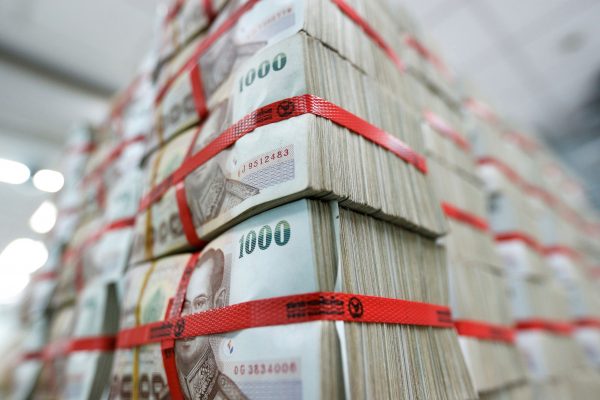The speed of economic recovery in Thailand has been slower than neighbouring countries such as Malaysia, Vietnam and China, especially in terms of industrial and service output. Part of the reason is the inadequacy of Thailand’s policies during lockdown, particularly its tax measures and special loan initiatives to help vulnerable firms maintain cash flow and reduce costs of production.
There was also no clear policy geared directly at retaining employment in industries such as tourism that were hit hard by COVID-19. Tax measures meant to support firms were mostly limited to tax payment deferral for three months and an acceleration of tax refunds, whereas others such as Malaysia, China, South Korea and Japan offered tax cuts. South Korea allowed tax payment deferral for nine months; Japan offered it for almost a year.
Singapore, Malaysia and Vietnam all offered wage subsidies to small and medium-sized enterprises (SMEs) to help retain employees. Thailand’s policy was limited to reducing the contribution rate to the Social Security Fund (SSF), extending the duration of contribution form submissions and providing special funds for employment training. Fortunately, workers registered with the SSF, independent labourers, vulnerable persons and low-income earners did receive financial assistance from the government, though payments were delayed.
The central bank offered 500 billion baht (US$16.7 billion) in soft loans as part of a 1.9 trillion baht (US$63.4 billion) budget (around 14 per cent of GDP) for providing remedies, stimulating the economy and enhancing production potential in several sectors. The accessibility of these loans has been questioned — as of November 2020, only 25 per cent of them have been taken. Conditions regarding eligibility for borrowing, loan duration, speed of the loan approval process and surety conditions for the loans remain under debate.
After completely lifting its lockdown in July 2020, the government introduced a series of more targeted measures to stimulate the economy. For example, the central bank extended debt relief measures for SMEs that began in April 2020, but only for specific firms that cannot repay loans to financial institutions. These targeted measures will end on 30 June 2021.
Around 25 billion baht (US$835 million) has been allocated to support tourism and related industries. The ‘We Travel Together’ stimulus package launched in July 2020 and ending in April 2021 will see the government partly subsidise some tourist expenses including hotel accommodation, airfares and other tourist activities. Measures such as these will likely support economic recovery.
In October, the government offered an unconditional co-payment to 10 million Thai citizens to purchase day-to-day goods, excluding alcohol and tobacco, in the hope of stimulating private consumption. Under the scheme, the government subsidises half the cost of purchases with a maximum daily co-payment of 150 baht (US$5) per day, totalling 3000 baht (US$100) per person, for up to three months. The scheme was extremely popular, and in December Cabinet expanded it to cover another 5 million people and raised the total subsidy to 3500 baht (US$117) per person. The original 10 million people also received an additional 500 baht (US$17) each.
Without any income conditions, equal access to the scheme was problematic and many applicants complained about losing their opportunity to benefit from the scheme. To what extent the scheme will stimulate consumption is yet to be seen since the subsidies last up to three months. Rather than stimulating the economy as expected, the scheme may just be palliative.
Although a series of measures have been implemented, some key aspects of Thailand’s economic performance look grim. The number of unemployed persons jumped to more than 800,000 in October 2020 from only 370,000 in 2019, while the share of private investment in GDP in the third quarter of 2020 fell to its lowest level (14 per cent) since 2003. Household debt reached 83.8 per cent of GDP in October, the highest level in 18 years.
To resolve these challenges, Thailand needs more employment stimulus policies, a proper debt-restructuring program and medium to long-term growth stimulus measures. The Thai government has prepared a 400 billion baht (US$13.3 billion) budget to enhance production potential and competitiveness in several sectors. But the draft budget accounted for only 17 per cent of this figure and listed only three industries: agriculture, tourism and textiles. Projects concerning the digital economy, the ‘green’ economy and logistics are inadequate.
In pushing these projects ahead, the Thai government needs to further develop the country’s human capital in the current climate of digital transformation. Policy overlap and coordination failures across institutions need to be resolved. Infrastructure including e-governance, investment in 5G, and affordable and reliable broadband in remote areas should be prioritised. The proper handling of the pandemic, including testing, tracing and vaccine handling, and the country’s recent political challenges are also key in moving the economy forward in 2021.
Juthathip Jongwanich is Associate Professor at the Faculty of Economics and the International Competitiveness Research Cluster, Thammasat University.
This article is part of an EAF special feature series on 2020 in review and the year ahead.

